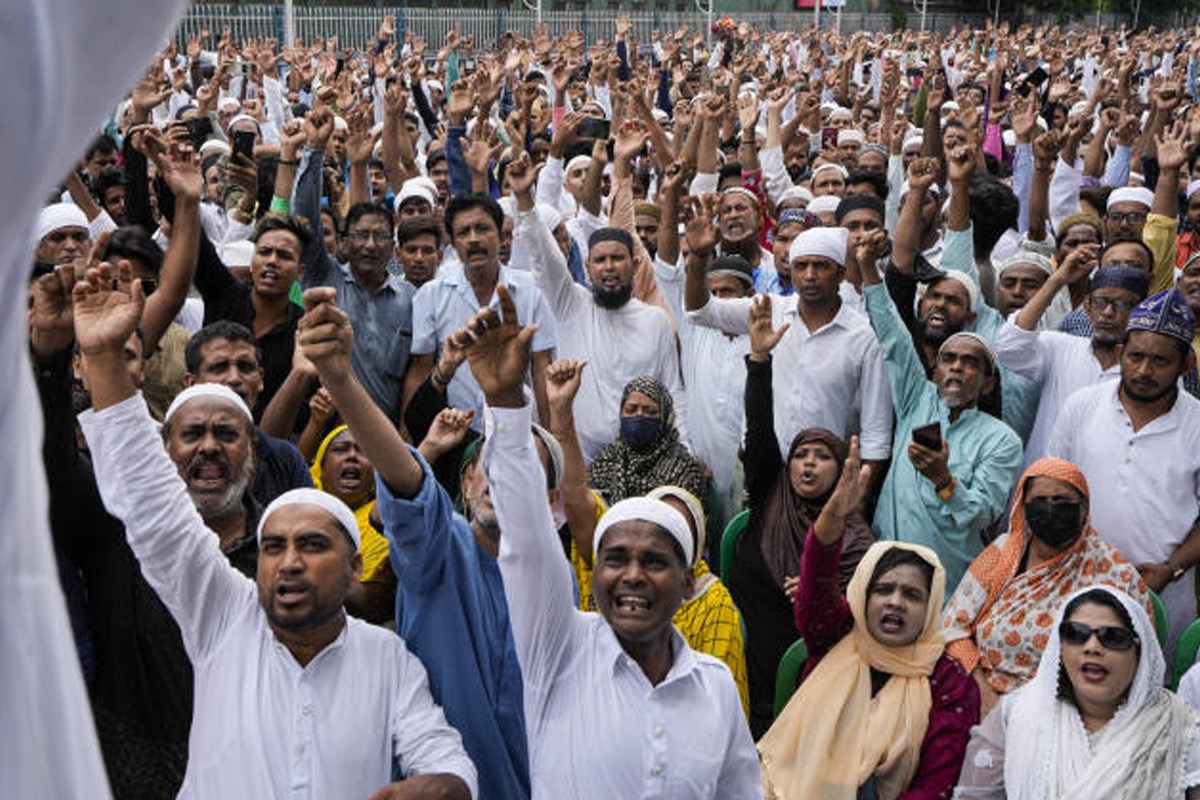At a time when the Bihar government is facing the ire of Hindus and right-wing parties over Ram Navami clashes, CM Nitish Kumar’s caste census initiative has also included two dozen Muslims to ensure the alliance’s politics of appeasement remains intact before the 2024 elections.
Ahead of the start of the second phase of the caste census, the Mahagathbandhan government has recognized 216 castes among Hindu and Muslim communities and assigned dedicated numeric codes for each social group.
Code number 25 has been assigned to chief minister Nitish Kumar’s caste, Kumri, while 167 has been kept reserved for the Yadavas – the powerful caste deputy CM and Rashtriya Janata Dal (RJD) leader Tejashwi Yadav hails from.
Muslims have been divided into at least 22 sub-castes, including Malik (code number 152), Pathan (107), Bhaat (139), Bhangi (162), and Sayyed (193).
While Baniyas have been divided into 20 different categories, Brahmins have been assigned a single code: 128. Bihar’s powerful Rajputs and Bhumihars have been given code numbers 171 and 144, respectively. Trans people will be identified with their code 23, and code number 216 has been assigned to ‘Others’ – social groups not listed by the government.
According to official figures, Muslims – who are a key ingredient of the Mahagathbandhan’s social engineering – constitute 16.9 per cent of Bihar’s total population. The Yadavas are 10 per cent of the total population while the Kurmis constitute 4 per cent. Muslims and the Yadavas (MY) form the core support base of the RJD, whereas Kurmis have traditionally been with Chief Minister Nitish Kumar.
Authorities have described the move as a step towards modernizing the caste-based identification system and streamlining government policies to ensure they meet the intended social groups. These codes will be used in application forms and other reports in the future, enabling easy identification of castes. The Bihar government plans to use this data to base its development plans on. In addition, this new system will also prevent the possibility of duplicate entries in the census data.
However, opposition politicians, social workers, and academicians have called the caste codification exercise a continuation of RJD and Janata Dal United’s politics of appeasement.
Speaking to The New Indian over the phone, Patna-based economist and commentator NK Choudhary called the exercise an attempt to revive the Mandal Commission politics of the 90s, which fueled Tejashwi’s father Lalu Prasad to the chief minister’s post.
“It is more of a political exercise rather than an administrative one. It’s in continuation of the politics of appeasement of not only minorities, but also of lower castes and aims to revive the Mandal politics to push back BJP’s politics of Hindutva,” said Choudhary, the principal of Patna College.
He further said that caste census – an issue that brought the RJD and the JDU together at the cost of the BJP last year – is part of Nitish Kumar and Lalu Prasad’s attempt to perpetuate the role of lower castes in Bihar for a long time.
“Data available with the government is already sufficient to frame policies targeting specific social groups. Who does not know that land reforms, if undertaken, will benefit Maha Dalits?” the academician asked.
The Opposition BJP, which is treading cautiously over caste census given political sensitivities around the issue, has also criticized the codification move, calling it an attempt of the incumbent regime to solidify its voter base.
“All these things are being done to solidify caste-based vote-bank,” said BJP MLA Haribhushan Thakur Bachaul. Another BJP legislator, Ramsurat Rai said, “The chief minister is doing all this to enable quota within quota. It is not good.”

